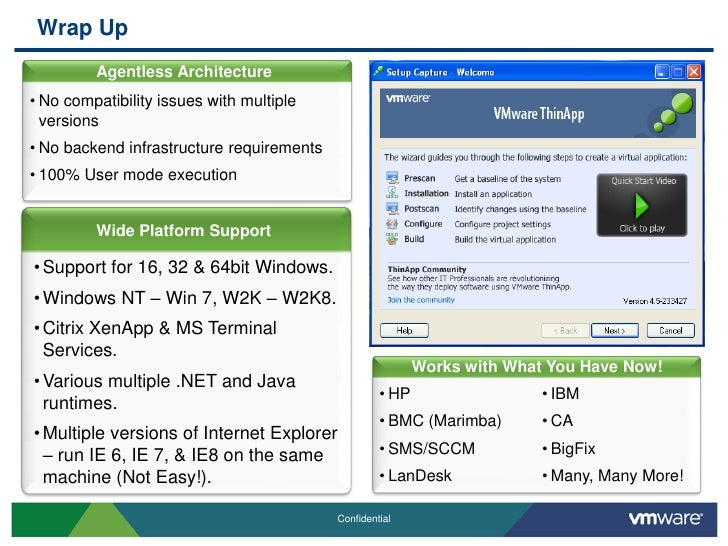


If you are interested I did a word vomit a few weeks ago when someone asked a question about their upcoming implementation of View. I can't speak to it, but my guess is once you get over the initial few week/month learning curve they are both equally as easy to manage. We saw pretty equal desktop performance out of both but about 8% better (lower) bandwidth consumption out of Citrix when compared to View. Claim this Software page VMware ThinApp is available for Windows. Join/Login Open Source Software Business. I guess it depends on your personal preferences. Read VMware ThinApp reviews from real users, and view pricing and features of the Application Virtualization software.

With Citrix we spend 2 days with an on-site engineer setting things up and at the end of it we had desktops provisioned but we could barely navigate the product.Ĭitrix is a slightly more mature product and has some features you may not get in View, but likewise View has some things you won't get from Citrix. As a general rule, you are likely to have the best application virtualization experience if you use a product from the same vendor that you use for VDI. Microsoft also has an application virtualization tool, App-V, and there are other alternatives on the market as well. We set up View in 2 hours reading the manual and were provisioning desktops. XenApp is a Citrix product and ThinApp is a VMware product. We did bring in Citrix to do a proof of concept and bake off against View when we first started with VDI 3 years ago. What are the top industries that use VMware ThinApp Top industries that use VMware ThinApp for virtualization are Cloud (25), Managed Services (23), Cloud Computing (17). I use VMware View and 99% of my experience is with that product. The top alternatives for VMware ThinApp virtualization tool are VMware with 45.69, Citrix Workspace App with 16.57, VMware vSphere with 11.19 market share.


 0 kommentar(er)
0 kommentar(er)
